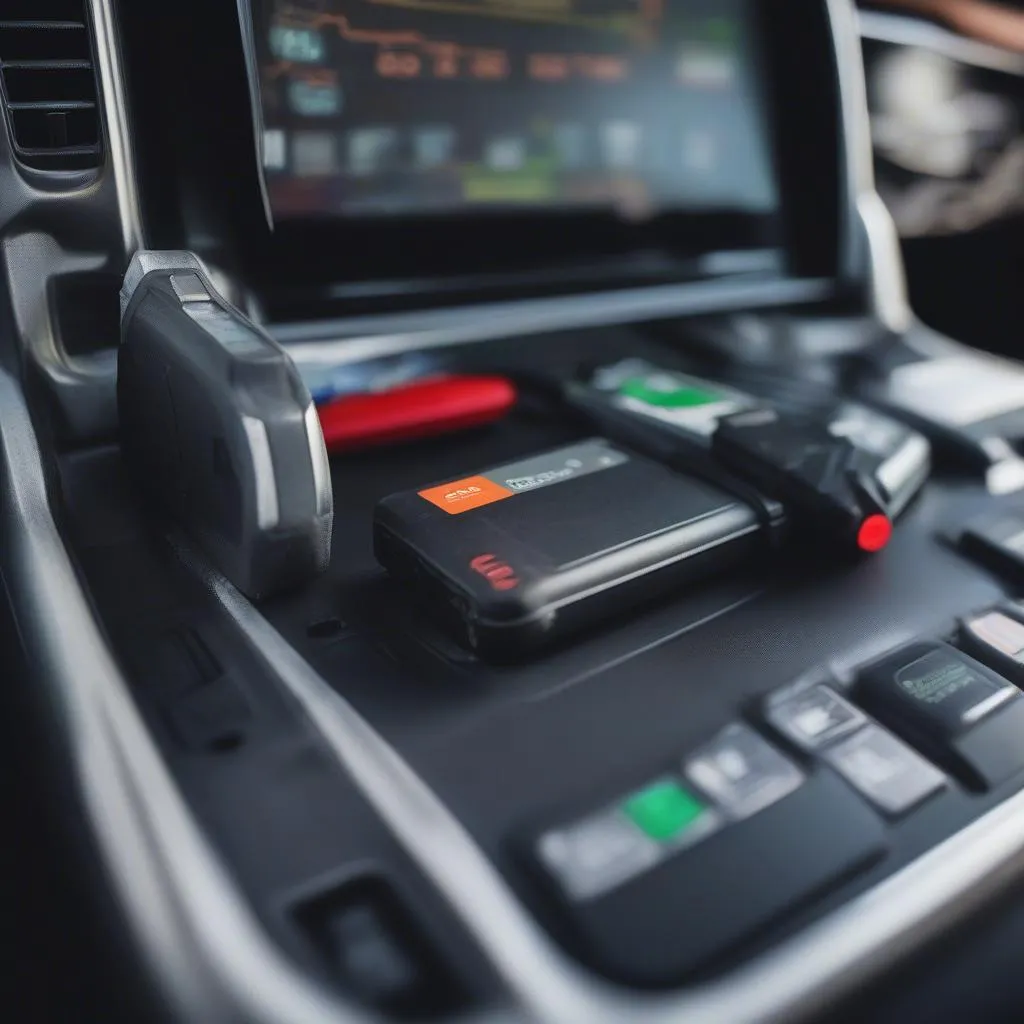Have you ever wondered how mechanics know if your car is emitting harmful pollutants? Well, it’s all thanks to an emissions tester! These handy tools are essential for ensuring your car stays environmentally friendly and meets emissions standards. Today, we’re diving deep into the world of emissions testers, exploring their purpose, different types, and how they work.
What Is an Emissions Tester?
An emissions tester is a device that analyzes the exhaust gases emitted by your vehicle. These gases can include harmful pollutants like carbon monoxide, hydrocarbons, and nitrogen oxides. By measuring the concentration of these pollutants, an emissions tester can determine if your car is operating within acceptable limits.
The Importance of Emissions Testers
Environmental Impact
Emissions testers play a crucial role in safeguarding our environment. By identifying and addressing issues that cause excessive emissions, these tools help reduce air pollution and protect public health. For instance, in California, the strict emissions standards enforced by the California Air Resources Board (CARB) have significantly reduced smog and improved air quality.
Vehicle Performance
Beyond environmental benefits, emissions testers also help maintain your vehicle’s performance. An emissions test can reveal underlying issues that may be affecting your car’s fuel efficiency, engine power, and overall health. For example, a faulty catalytic converter can cause a decrease in fuel efficiency and increase emissions.
Legal Compliance
Many jurisdictions require vehicles to pass emissions tests regularly. This ensures that cars meet legal requirements and contribute to cleaner air. In the United States, for example, the Environmental Protection Agency (EPA) sets emissions standards for all vehicles sold in the country.
Different Types of Emissions Testers
OBD-II Scanners
OBD-II scanners are a common type of emissions tester, particularly for newer vehicles. They connect to the vehicle’s On-Board Diagnostic (OBD) port, allowing technicians to retrieve diagnostic trouble codes (DTCs) and access real-time sensor data.
Smoke Meters
Smoke meters measure the opacity of exhaust smoke. This information helps diagnose issues like faulty fuel injectors, clogged air filters, or a malfunctioning EGR system.
Gas Analyzers
Gas analyzers provide detailed information on the composition of exhaust gases, measuring specific pollutants like carbon monoxide, hydrocarbons, and nitrogen oxides. These testers are often used in conjunction with OBD-II scanners to conduct comprehensive emissions testing.
How Emissions Testers Work
Emissions testers typically operate by measuring the concentration of pollutants in exhaust gases. The process often involves:
- Sampling: The tester draws a sample of exhaust gases from the tailpipe.
- Analysis: The sampled gases are passed through sensors that measure the concentration of different pollutants.
- Results: The tester displays the results, either numerically or visually, indicating if the emissions levels are within acceptable limits.
What to Expect During an Emissions Test
During an emissions test, a mechanic will typically follow these steps:
- Vehicle Inspection: The mechanic will visually inspect your vehicle for any obvious signs of emissions problems, such as leaks or damage to the exhaust system.
- Engine Warm-Up: The engine is warmed up to operating temperature to ensure accurate test results.
- Connection: The emissions tester is connected to the vehicle’s OBD port or exhaust system.
- Testing: The tester is activated, and the exhaust gases are analyzed.
- Results: The test results are displayed, and the mechanic will discuss any issues found.
FAQs About Emissions Testers
What Happens If My Car Fails the Emissions Test?
If your car fails the emissions test, you’ll need to have the issue addressed before you can pass. The mechanic will likely identify the source of the problem and recommend repairs.
How Often Do I Need to Have My Car Tested?
The frequency of emissions testing varies by location and vehicle age. Check your local regulations or contact your vehicle manufacturer for specific requirements.
What Can Cause High Emissions?
Several factors can contribute to high emissions, including:
- Faulty Catalytic Converter: This component converts harmful gases into less harmful substances.
- Clogged Air Filter: A restricted airflow can disrupt the air-fuel mixture, leading to higher emissions.
- Malfunctioning Oxygen Sensors: These sensors monitor the oxygen levels in the exhaust and signal the engine control unit to adjust the air-fuel mixture.
- Leaking Exhaust System: A leak in the exhaust system can allow unburned gases to escape into the atmosphere.
Conclusion
Emissions testers are an essential tool for maintaining the environmental friendliness of your vehicle. By identifying and addressing emissions issues, these devices help reduce air pollution and protect public health. If you’re concerned about your vehicle’s emissions or need to have it tested for compliance, contact a qualified mechanic for professional assistance.
 Emissions tester in a mechanic's shop
Emissions tester in a mechanic's shop
 Closeup of OBD2 scanner
Closeup of OBD2 scanner
 Emissions test in a garage
Emissions test in a garage
For more information on automotive diagnostics, visit our website: https://diagxcar.com
Need help installing or troubleshooting diagnostics tools? Contact us via Whatsapp: +84767531508. Our team of experts is available 24/7 to assist you.